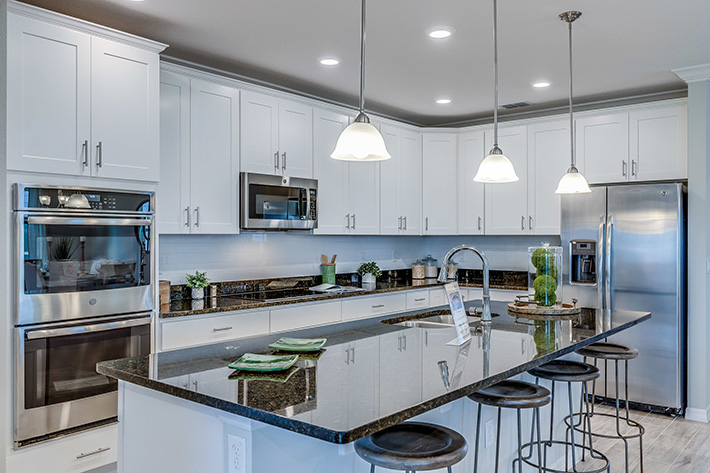If you have granite countertops in your home, you may be wondering their grade. Also, if installing granite countertops ranks as one of your home improvement goals, you need to know how to separate the high-end stone from the chaff that sells at bargain prices for a reason.
As with most home décor, granite comes in a variety of quality levels.
So, on what is granite grade based?
It may surprise you to learn no standard exists for granite grading. Unlike the condition of rare coins, which collectors have professionally graded according to the industry’s universal scale, granite gradings differ completely by who conducts the assessment. As a result, most manufacturers and sellers have developed their individual quality rating systems.
As a result, granite buyers should never attempt to compare pieces based on different scales. Instead, they need to assess the quality by performing the tests discussed in this article. These tests allow you to accurately determine the quality of your granite countertops and make fair comparisons while shopping.
What Determines the Quality of Granite?
While no universal granite grading scale exists, manufacturers, sellers, and buyers agree on what characteristics determine quality. They base their assessments on soft mineral content, origin, thickness, color, and porosity. Industry insiders employ standard tests for each aspect. In addition, they have a process for telling the difference between granite, marble, and limestone.
For instance, commercial-grade granites contain many dispersed soft minerals. As a result, they also have more minor color variations than higher-quality granite.
On the other hand, radiant colors and intricate patterns serve as the identification markers for mid-grade granite.
The highest quality granites display unique colors and gorgeous, vibrant patterns that are as rare as they are beautiful.
Steps for Assessing Granite Quality
When deciding the quality level of granite, start by finding out its origin.
Research the Granite’s Origin
No region can claim a corner on the granite market. It is found worldwide, from China to Europe to the Americas. The origin of granite does not necessarily determine its quality. However, its country of origin affects its price. Where labor costs are low, granite is sold cheaper, such as slabs from China. Higher-cost countries, such as Italy or Brazil, want more for similar quality.
In addition to labor costs, shipping expenses factor heavily into the price of granite. Because of its immense weight, granite costs a small fortune to transport. For this reason, you can get the best price on granite sourced close to home.
Check Granite Thickness
A large part of granite’s expense can be attributed to its natural state when extracted from the ground. Granite forms into massive slabs. Once harvested, these huge chunks must be shipped to a manufacturing facility, where workers cut them into commercially viable pieces.
To increase their granite yield, many manufacturers cut some sections too thin. When granite is too thin, it loses its durability, resulting in a lower grade granite that scuffs more easily and must be replaced years earlier than thicker pieces. To qualify as high-quality, granite countertops must be 1 to 1 ¼ inches thick.
Examine Appearance
To determine granite quality, you must examine it closely. Do you see any dings, dents, scratches, or unevenness? Any blemishes indicate a lower quality granite. Good granite withstands regular household use, so the quality is probably low if yours shows wear and tear. Also, be cautious about purchasing any blemished granite. High-quality pieces are scratch and ding free.
Granite buyers must be especially wary of cracks. Even tiny cracks grow into large chasms over time. Fine granite does not crack.
Determine Granite Porosity
Top-grade granite resists absorption of liquids. If a piece of granite is too porous and allows liquids to seep inside, it is a low-grade slab that will last only a short time. In addition, extending the life of porous granite requires the routine application of expensive sealants.
To determine porosity, squeeze a drop of lemon juice onto the countertop. How long does it take for the granite to absorb the liquid? If it absorbs quickly, the porosity is too high. Slow or no absorption indicates quality granite.
This is no idle test. Countertops must withstand water and other liquids daily. The lemon juice test shows if the granite is fit for practical use.
Assess Polish Quality
To shine brightly and withstand daily use, granite must be effectively polished. To check the quality of granite polish, use a metallic material, such as a coin, to scratch the surface. If the coin leaves a mark, the polishing quality is poor, and the granite will become tarnished quickly.
Perform the Scratch Test
Not sure if your countertops are granite, marble, or limestone? To find out, try to make a scratch with a knife blade (at a low visibility location). If it’s granite, you will find it difficult or impossible to scratch the surface. However, should it scratch easily, the countertop is likely marble or limestone.
Granite countertops are versatile, beautiful, and durable. You can use them for years for all your kitchen activities without worrying about wearing them out—provided you select a high-quality grade. By performing some simple tests, you can determine if you have high-grade granite countertops.
Best Granite and Marble in Livonia Michigan has been remodeling kitchen and bathroom countertops for over 60 years. Using the highest quality granite, marble and quartz, we will fabricate, sculpt and install your desired countertop solution. Our countertop store showcases a large selection of stone slabs in an impressive array of colors, patterns and designs.
Call and speak with one of our countertop design professionals today! Free Consultations

